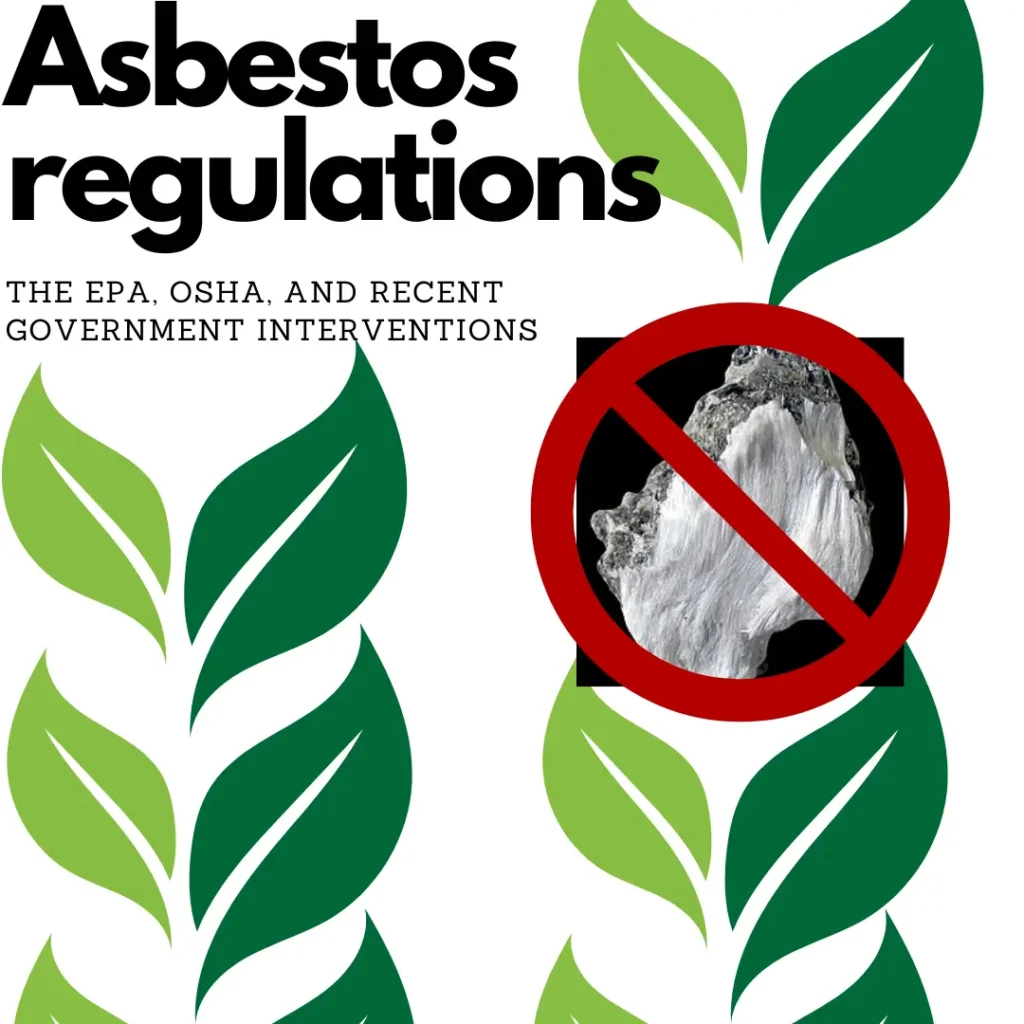Key takeaways: In 1989, the Environmental Protection Agency instituted a partial ban on
asbestos and asbestos-containing products. In 2019, the EPA issued a final rule banning
discontinued asbestos products from re-entering the market. After spearheading a review of
chrysotile asbestos in 2020, the EPA is proposing a ban of chrysotile asbestos as a form of risk
management and asbestos regulations. Chrysotile asbestos is the only type of asbestos fiber still regularly used in the U.S.; a passing of the 2022 ban would result in a near complete ban of asbestos.

1989 Partial Ban – Asbestos Regulations
Until 1989, asbestos use was pervasive in the United States, despite numerous empirical studies
confirming its correlation with mesothelioma. Scientists eventually elicited a government
intervention that pursued regulated asbestos use, although these efforts took decades to come to
fruition. The 1989 partial ban, enacted by the Environmental Protection Agency (EPA),
prevented the manufacture, sale, assembly, and import of some asbestos-containing products.
Asbestos products, though, weren’t allowed to be imported or sold at all. Although not an
outright ban, the partial ban was significant for several reasons: it qualified the power of
scientific pursuit in policy, established the government as protective of its citizens, and
established the EPA and OSHA as denizens of employee rights.
In 1991, the Fifth Circuit Court of Appeals overturned the 1989 partial ban. By effect, most
asbestos-containing products weren’t banned any longer; however, because the EPA prohibited
the mining and manufacture of asbestos-containing products prior, these campaigns didn’t
resume after the 1991 appeal. Asbestos-containing products–like packaging material, fire
retardant protective wear, and vehicle parts–could be legally imported and sold, however.
2019 Final Rule on Discontinued Uses
In April 2019, the EPA issued a final rule stating that discontinued asbestos products cannot
re-enter the market without EPA approval (and consequent testing, consultation from scientists,
and input from employees’ rights associations). By effect, this reified the 1989 partial ban and
made accessing asbestos-containing products significantly more difficult.
As of 2019, the EPA was operating under several acts that ensured their power over regulating
asbestos use, including the Toxic Substances Control Act (TSCA), Clean Air Act (CAA), and
Consumer Product Safety Act.
2022 EPA Proposed Ban of Ongoing Asbestos Use(s)
After commissioning a review of chrysotile asbestos–the only type of asbestos that is still used
in the United States–in 2020, the EPA began a risk management campaign. The 2022 proposed
ban, which is still under review, would ban all import, sale, dispersal, and usage of chrysotile
asbestos as a preventative measure. This is the first risk management bill of its kind–usually,
protective bills are passed after a substance is deemed harmful or dangerous. However, because
decades of research have established all forms of asbestos as dangerous, the EPA has enough
evidence to push the bill preemptively. The agency was incorporating the public’s input on their
proposed ban and hosted webinars for those interested. You can check out the recorded versions
here.
Hopefully, the 2022 proposed ban will set a precedent for future asbestos regulations, both in the
U.S. and internationally.
If you or a loved one has been diagnosed with mesothelioma, please call 1 (800)-505-6000. We
are here to help you navigate the legal process of filing a claim to receive compensation for your
mesothelioma diagnosis. We help mesothelioma victims and their families in Pennsylvania.
Sources:
https://www.epa.gov/sites/default/files/2020-07/documents/asbestos_ip.pdf